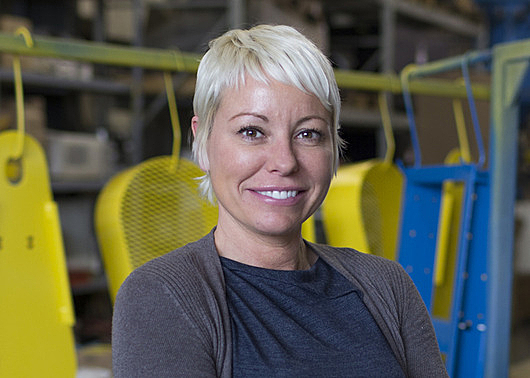
You asked. We answered.
Our live webinar on May 14, Understanding Airlocks, concluded with a lively Q&A session. In case you missed it, here are the questions that were asked, along with our answers.
Have a question of your own? Ask us.
Missed the webinar? You can still watch it on demand here.
1. My rotor pockets get blocked too often, what are possible reasons for that?
If the pockets are shaped like ‘V’s, the material can get caught in the point and build up inside the pocket. Another reason for blockage might be that the conveying line underneath isn’t taking all of the material away, so some of it is coming back up through the valve.
I would suggest a rotor pocket air purge be added to each endplate. If your conveying system is running at around 5 or 6 psi, I’d set the pressure 5 psi higher than that, and put the purge hole in the centre of the discharge pocket (in the endplate), so if there’s material in the pocket, it will blow it clear.
2. With highly abrasive material, do you recommend wipers and of what material?
For abrasive materials, if there’s a pneumatic conveying system involved, you can’t really use wipers because they won’t hold the seal. But if it’s just a gravity application, I would suggest going with 3-ply conveyor belting; it really stands up to abrasive material like cement and fly ash.
3. What causes an air lock to trip? What can we do to help solve the problem?
- 1. The horsepower isn’t sized appropriately—it takes a certain amount of torque and power to move that rotor and improper horsepower sizing will cause it to trip out.
- 2. Material drag in the valve—it causes the motor to work harder and once it hits overload it will kick out.
4. For airlocks dropping into a pressurized blow line, in which direction should the rotary valve rotate to reduce the amount of air leakage relative to the direction of the blow line?
The rotation of the valve should be feeding in the same direction as the blowing line. It’s more important that the blow-through adaptor (the discharge) is in line with the conveying line and the shaft of the valve. So if you look at the shaft from each side, your blow-through adaptor should be in that same configuration.
5. You talk about replacing the rotor for tighter clearances, but what about replacing the housing due to wear from material?
Typically if you coat the valve with a good chrome or tungsten, your rotor will wear first and you change that. If there is no coating, it’s quite possible that you’d have to replace both the housing and the rotor due to the wear—the gap would be too large even if you did get a new rotor. Replacing both is obviously more expensive, which highlights the importance of internal coatings.
6. I want to convey SBR rubber powder, but the rotor produces rubber tails, so we decided to change for flaps. Now the flap seals get build up and cause a lot of air leakage problems; we are thinking about changing the rotor, what would be your recommendation?
If this rotor is being introduced to a pneumatic conveying system, I would suggest a stainless steel rotor. That way, you get tight tolerances and keep them. Flapper blades wear quickly and you get a lot of air leakage and a lot of blow by—air will come up through the valve and push the rubber away from the steel. Along with a stainless steel rotor, I suggest adding a rotor pocket purge to help the material get out of the pocket.
7. Is the galvanoplastic plating treatment recommended for a rotary valve that will be exposed to very abrasive materials?
You can galvanize anything, but I would suggest a hard chrome plating (10 thou). It’s one of the better platings, in my experience. We’ve also had a lot of success with tungsten in a lot of industries as well.


